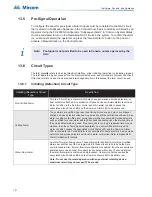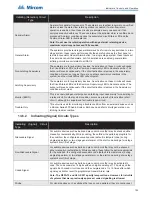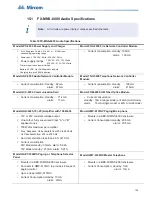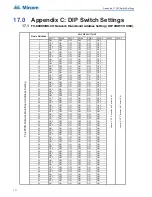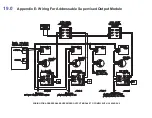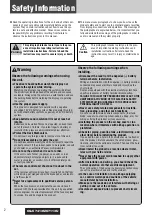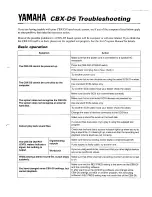
100
Indicators, Controls, and Operation
•
All non-disconnected strobe circuits are activated continuously.
•
All non-disconnected signal circuits are activated at the evacuation rate.
•
The General Alarm LED turns on.
If the alarm is a First Stage alarm,
•
Non-disconnected strobe circuits programmed to that circuit are activated continuously.
•
Non-disconnected signal circuits programmed to that circuit are activated with the alert
code.
•
The Auto General Alarm timer, if configured, starts.
•
The Automatic Alm Sig Stop (Ack) LED starts flashing.
Subsequent First Stage alarms when the panel is already in alarm, cause the following:
•
The buzzer sounds steadily.
•
If signals have been silenced as a result of the silence button or the Auto signal silence
timer, signals are resounded as they were before signal silence, the Signal Silence LED
turns off, and the Auto Signal Silence timer, if configured, is restarted.
•
If the panel is not already in General Alarm, additional non-disconnected signals
programmed to the new input are activated with the Alert Code (s
ee
Indicating (Signal)
Circuits Types on page 102).
•
If the panel is not already in General Alarm and if the Automatic Alm Sig Stop (Ack) LED
is on steady indicating that the Auto General Alarm timer has been Acknowledged the
timer is restarted and the Automatic Alm Sig Stop (Ack) LED is extinguished.
A second stage alarm (general alarm) when the panel is already in alarm causes the following:
•
The buzzer sounds steadily.
•
All non-disconnected signals are activated at the evacuation rate.
•
If the Signal Silence LED is on, it turns off and the Auto Signal Silence timer, if
configured, is restarted.
•
The Automatic Alm Sig Stop (Ack) LED if on, turns off.
Alarm inputs are latching: they remain active until system reset.
Note:
If the system is configured for correlations, any second stage / general alarm
condition activates all NACs whether they are correlated or not.
i
Summary of Contents for FX-MNS-6000
Page 2: ......
















